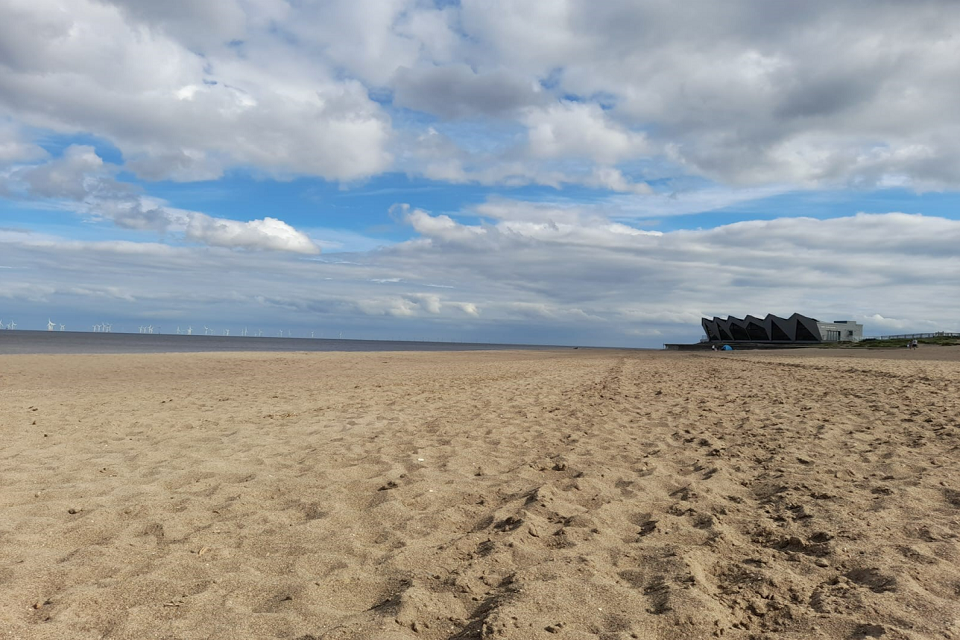Bathing water success for Lincolnshire and Rutland
In Lincolnshire and Rutland all 11 bathing waters have been classified as Good or Excellent.

New bathing water at Rutland Water, Sykes Lane, has been classified as Excellent.
96% of bathing waters in England have met minimum standards, with 90% of bathing waters in England being rated as ‘good’ or ‘excellent’ continuing to show an overall boost in water quality over the last decade. This compares to just 28% being rated as ‘good’ or ‘excellent’ in the 1990s and 76% in 2010.
The results, published today, follow testing at over 400 sites regularly used by swimmers throughout the summer. These tests, carried out by the Environment Agency, monitor for sources of pollution known to be a risk to bathers’ health, specifically E coli and intestinal enterococci.
In Lincolnshire and Rutland all 11 bathing waters have been classified as Good or Excellent. Bathing waters in Lincolnshire have been Good and Excellent for 13 years.
Rutland Water gained two inland bathing waters this year Skyes Lane and Whitwell Creek. Sykes Lane has been classified as Excellent and Whitwell Creek has been classified as Good. The classifications, ordinarily, are based on four years’ worth of data.
There are four possible classifications a bathing water can be ranked as. An Excellent classification is the highest with the cleanest water quality. A Good classification then follows meaning generally good water quality.
Anwen Bickers, a specialist at the Environment Agency, said:
We are so happy that our hard work has paid off for another year. We are also pleased to see that our two new bathing waters Skyes Lane and Whitewell Creek are off to a great start. We hope to see positive results again next year with help from our partners.

Chapel St Leonards has been classified as Excellent.
The substantial improvements seen over the last 30 years come as the Government continues to take action to boost water quality through the Plan for Water. This will help drive investment, bring in stronger regulation, and toughen enforcement to tackle pollution and further clean up our waterways and bathing waters. This includes a £1.7 billion accelerated investment to reduce sewage spills from storm overflows.
Water Minister Robbie Moore said:
“Our bathing waters have improved significantly in recent years, and we are fully committed to seeing the quality of our coastal waters, rivers and lakes rise further for the benefit of the environment and everyone who uses them.
“Our Plan for Water is delivering more investment, stronger regulation and tougher enforcement to clean up our waterways and continue to improve our bathing waters.
“We have also set stringent targets for water companies to reduce sewage spills from storm overflows which frontloads action at designated bathing waters to make the biggest difference to these sites as quickly as possible.”
Measures to improve water quality include:
- Setting strict targets for water companies to reduce the impact of storm overflows. This has led to the largest infrastructure programme in water company history with £60 billion to be invested over the next 25 years, preventing hundreds of thousands sewage overflows every year.
- Significant new investments to improve water quality at bathing waters, ramping up the investment from the last price control to improve hundreds of storm overflows across the country, and investment to install thousands of new state of the art water quality monitors across the country.
- Supporting farmers to reduce water pollution and an increase in agricultural regulation, including doubling funding for free face-to-face support on reducing water pollution to all farmers in England. The Environment Agency carried out more than 4,000 farm inspections across England last year, helping farmers comply with legal requirements and resulting in more than 5,000 actions undertaken to improve farm practices and drive improvements to our environment.
Over the past 30 years the Environment Agency has directed £30 billion of water company investment in sewerage improvements and other measures to improve and protect water quality.
Notes to editors:
- Over 400 bathing waters in England were sampled this year and have been classified as either Excellent, Good, Sufficient or Poor. These classifications and information about water quality will be displayed at each bathing water and on bathing water profiles available to access on the Environment Agency’s Swimfo website.
- The bathing water season runs from May to September every year. The Environment Agency took 7,271 samples during the 2023 bathing season. The Environment Agency takes up to 20 water samples at each of England’s designated bathing waters during the season.
- The sampling programme is set ahead of the start of season to avoid bias and follows a strict protocol to ensure samples are taken consistently both in terms of location and depth of water, and also covering a range of tidal states where safe to sample.
- Our standards for bathing waters come from guidelines produced by the World Health Organisation (WHO) and are science based. They have been adopted by many countries through the EU Bathing Water Directive, which England’s Bathing Water Regulations are based on.
- Over the last two years there has been an increased drive-in monitoring and transparency required of water companies around bathing water quality. We have increased the number of storm overflows monitored across the network from 7% in 2010 to 91% in 2022 with 100% expected by the end of this year. This will help drive the improvements and future investment needed to ensure bathing water quality is maintained and improved.